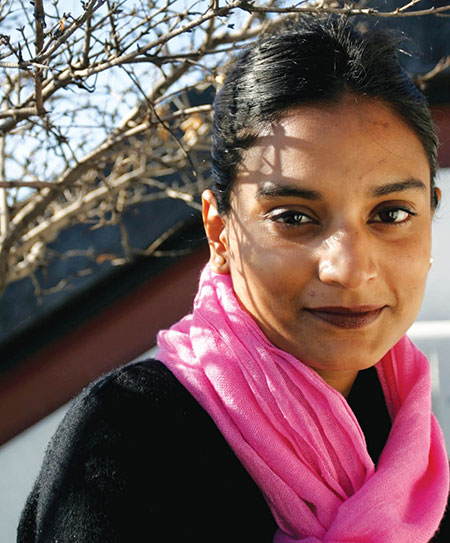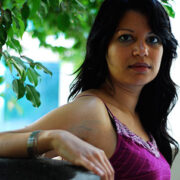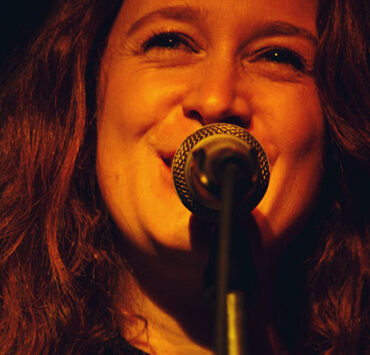Journalism can be broadly described as watching life through someone else’s eyes. We read about what happens in the world, and witness it through another person’s perspective. A similar explanation can be given for our experience when we read a story, in which we get to know the characters in such an intense way that we imagine ourselves watching them. And then, once in a while, along comes a book which intertwines the two. It uses characters and plots to narrate incidents of social importance, and once again, we find ourselves in the front seat, watching it all happen.
Such a book is Chinese Whiskers, a contemporary tale of two cats living in a hutong in Beijing, China. The book chronicles their lives in one home, both of them coming from separate backgrounds: One from the alley of a kind old woman and the other from a dustbin. It introduces us to people in and around the city; each different from the other. Along with describing suburban life, the story also brings up socially relevant topics from recent history, and shows it to us from a different perspective—that of felines.

Author Pallavi Aiyer. Photograph by Vidura Jang Bahadur.
The author, Pallavi Aiyar can be praised for the merging of reality with fiction in such an artful manner. Having started her career as a journalist in 1999, she went on to become the China Bureau Chief of The Hindu in 2003. In 2007, she was awarded the Prem Bhatia Memorial Prize for Excellence in Reporting. Her tryst with writing began in 2008, when she wrote her first, award-winning book Smoke and Mirrors, about her experiences in China.
We caught up with Pallavi for an exclusive interview. Read on for excerpts—
Your book—Chinese Whiskers—was very refreshing, mainly because of its protagonists. What made you use cats as the means of telling the story?
I spent five years living in Beijing’s hutongs. These were neighbourhoods that reflected many of the tensions generated by the intersection of China’s almost remorseless embrace of modernity with persisting forms of a more traditional, communal way of life. This was also the geography I wanted to set my novel in, because I thought the universality of the experience of life in these localities would strike a chord with readers both young and old.
Animals were an intrinsic part of the hutongscape. At twilight you could sometimes spot the elongated silhouette of huang shu lang (the yellow weasel), the Beijing equivalent of the city fox, tip toeing across the roofs of courtyard houses sniffing for prey. Regardless of the season old men in patched up Mao suits would sit around corner stores on low stools, their caged song birds proudly on display next to them.
This was an environment where people and animals lived cheek to jowl, the cramped spaces of the living quarters forcing everyone out on the street. Using cats just seemed an intuitive and interesting way to gain entry into this world.
Cats also can be interesting narrators of a story because of the insider-outsider perspective that they can bring to bear on events. The cats in Chinese Whiskers are “insiders” in the world of the hutong, where the book is set, but at the same time being non-human they bring an assessing eye to the human condition that may seem naïve but in fact asks very important questions. Why are some people (or animals) good and some bad? What are the responsibilities of the privileged towards the less fortunate? And so on.
Apart from the socially relevant topics in recent Chinese history covered in the book, there is also a flavour of a person’s (or rather a feline’s) life and experiences in China. I would assume parts of it relate to your own time spent in the country.
Absolutely. I spent five years living in Beijing’s hutongs and my experience of the rhythm and texture of this life was crucial to the novel. Moreover, in 2006 my husband and I adopted two kittens ourselves and through that process became acquainted with a whole new side to Chinese society. We came to meet dedicated cat protection activists, disillusioned veterinarians and wise grandmothers, some of whom ended up as characters in the novel.
All the characters in book, be it the warm old lady, the gang of alley cats, or the construction workers, have very strong personalities. It is commendable that they all complement each other so well. Any references from your surroundings?
There were no direct references, but indirectly the hutongs teemed with the kinds of people described in Chinese Whiskers: Corner store owners, neighbours who dropped by without warning just to gossip, “aunties” who cleaned the homes of the richer households, migrant workers with blackened teeth and kind hearts, wolfing down bowls of plain rice. On the flip, I also ran into some nastier characters over the years, arrogant louts reminiscent of the character of Fat Tao.

Chinese Whiskers book cover.
Let’s get to some clichéd questions, shall we? Which character would you relate to the most?
No prizes for guessing that one: Mrs A! And to some extent I suppose Tofu as well, although my own origins are not in a dustbin.
I’m sure everyone who reads the novel will also enjoyed the beautiful illustrations by Gerolf Van de Perre. What prompted you to make his art a part of the book?
I always wanted the book to be illustrated but was faced with a problem. I lived in Brussels far away from both China and India. Indian illustrators were not familiar with the setting of the novel while many Chinese artists could not read English well enough to get the nuances of the story either. I then happened to meet Gerolf through his wife Martine, a Belgian who had read my earlier book Smoke and Mirrors. Gerolf, a talented artist, not only lived in Leuven, half an hour from Brussels, but he had spent several years in Beijing at the beginning of the decade. His collaboration in the book was obviously fate!
We would love to hear the story of what led you to China.
I wish I had an impressive answer to give you along the lines of having had the foresight to predict how important an actor China was going to become in the 21st century. The truth is more banal, but also more romantic. I followed my then-boyfriend, now-husband, to Beijing back in 2002. We had met at university in London and he was China-inclined, having studied Mandarin as an undergraduate. He persuaded me to spend a year in the country, promising that I would fall in love with the experience—and he was right! My first year in Beijing was a teacher of English news writing at a university called the Beijing Broadcasting Institute. I moved on to reporting, first as a freelancer and later for the Indian Express and Hindu. It was almost seven years before I moved on to Brussels.
Brussels seems to be rich in history as well as international politics. How has your experience been so far?
To be honest, I have found life in Europe quite frustrating. The biggest difference is in the attitude of people. In China, everyone has a fire in their belly to change and improve their lot. There is a dynamism and flexibility of attitude that is really missing in Belgium. That said the European Union is a fascinating experiment and although its going through some challenging times, its certainly an interesting story to report on. I also really like the waffles and beer!
Can we expect your next novel to have a European touch to it?
I think that’s a distinct possibility. Intrigue in the corridors of the European Commission could well lend itself to a sequel in the adventures of Soyabean and Tofu. However, a nonfiction look at Europe during a time of shifting geo-political power structures is probably more likely first.








